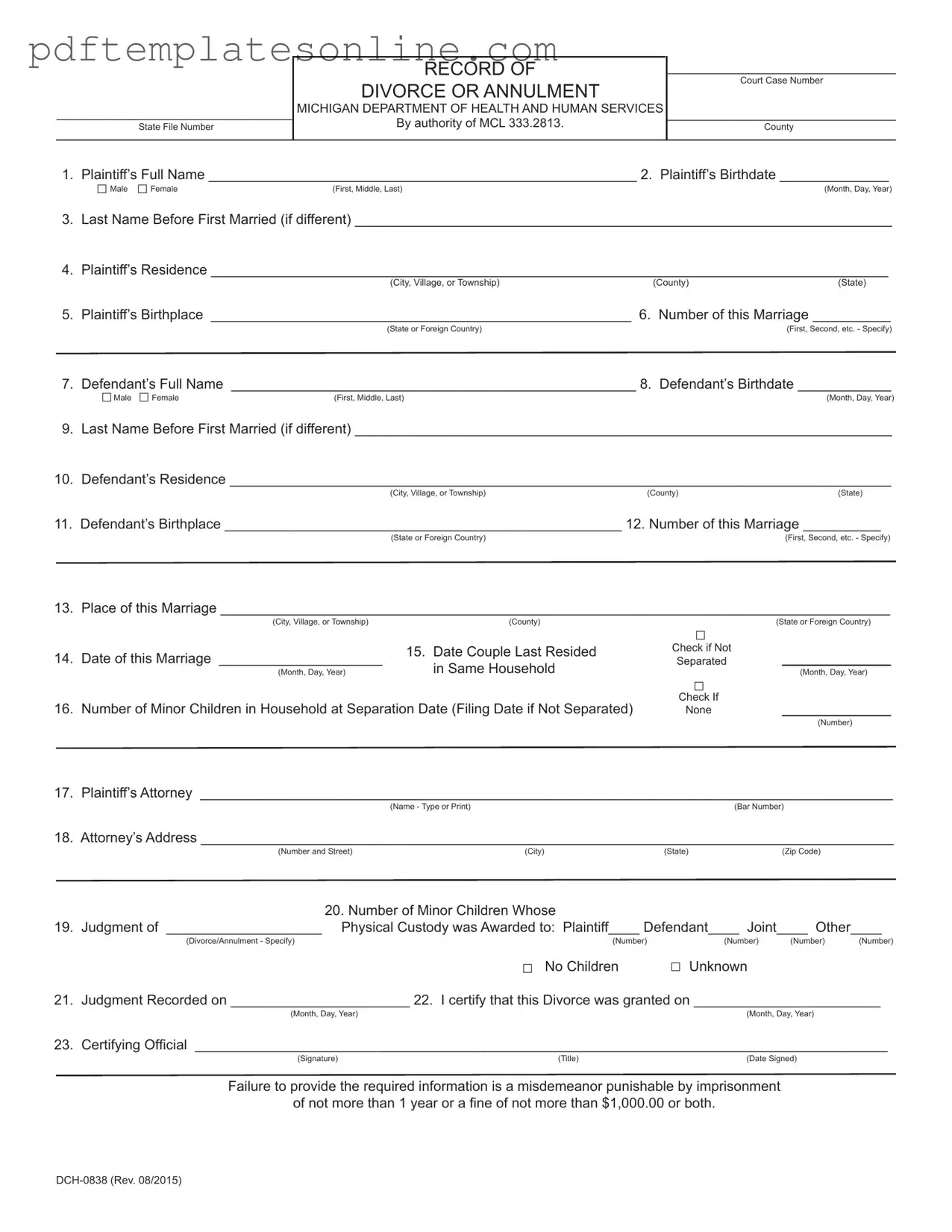Filling out the Michigan DCH 0838 form can be a straightforward process, but there are common mistakes that individuals often make. One of the most frequent errors is leaving out essential information. Each section of the form must be completed accurately. Missing details like the plaintiff's or defendant's full name can lead to delays or even rejection of the form.
Another common mistake is not checking the correct boxes for gender. It's important to indicate whether the plaintiff and defendant are male or female. Failing to do so can create confusion and may require the form to be resubmitted.
People sometimes forget to include the last name before the first marriage. This information is crucial for tracking marital history. Omitting it can complicate the record-keeping process and may result in issues later on.
When it comes to addresses, many individuals do not provide complete residency information. The form requires the city, county, and state. Incomplete addresses can lead to difficulties in processing the divorce or annulment.
Another mistake involves the dates. Couples often miswrite the date of marriage or the date they last resided together. Accuracy in these dates is vital, as they play a significant role in the legal proceedings.
People sometimes overlook the section regarding minor children. It’s essential to indicate the number of minor children in the household at the time of separation. Failing to do so can result in complications regarding custody arrangements.
Individuals may also forget to include their attorney's information. If a plaintiff or defendant is represented by an attorney, their name, bar number, and address must be provided. Missing this information can create delays in the legal process.
Finally, many forget to sign and date the form. The certification at the end of the form is crucial. Without a signature, the document is incomplete and cannot be processed.
Being aware of these common mistakes can help ensure that the Michigan DCH 0838 form is filled out correctly, making the divorce or annulment process smoother and more efficient.
